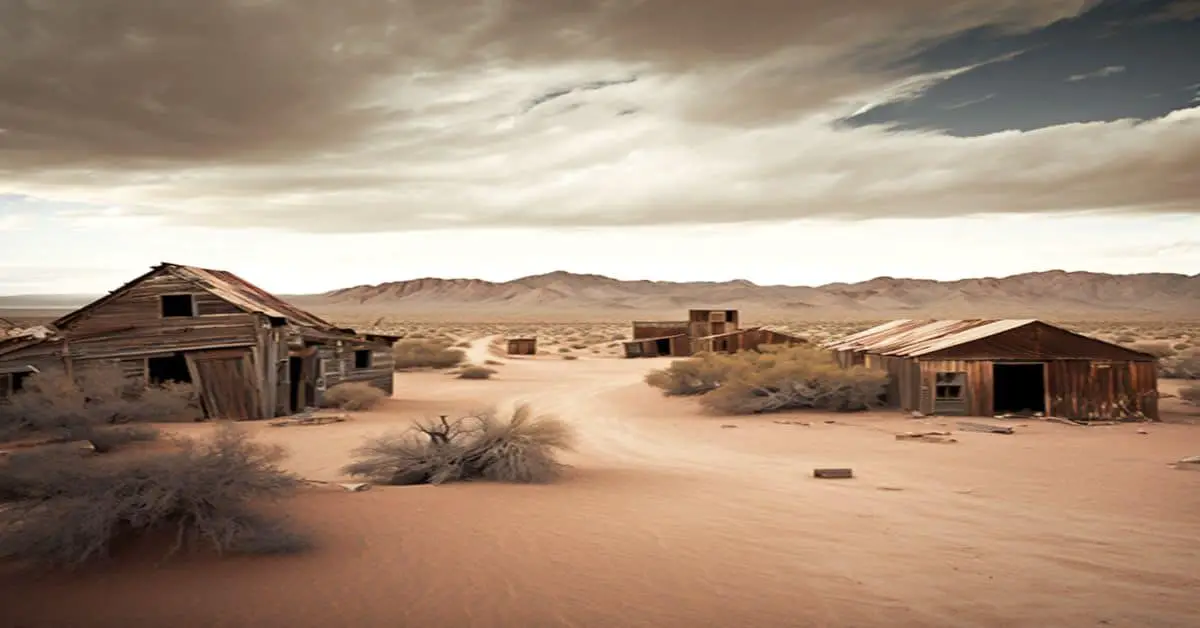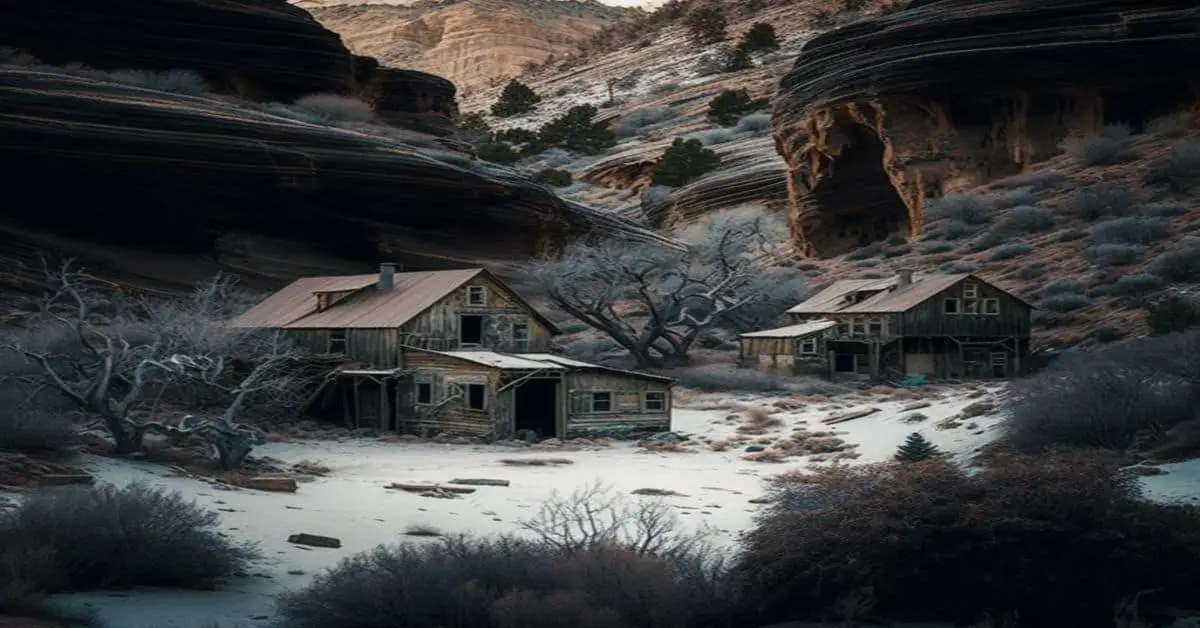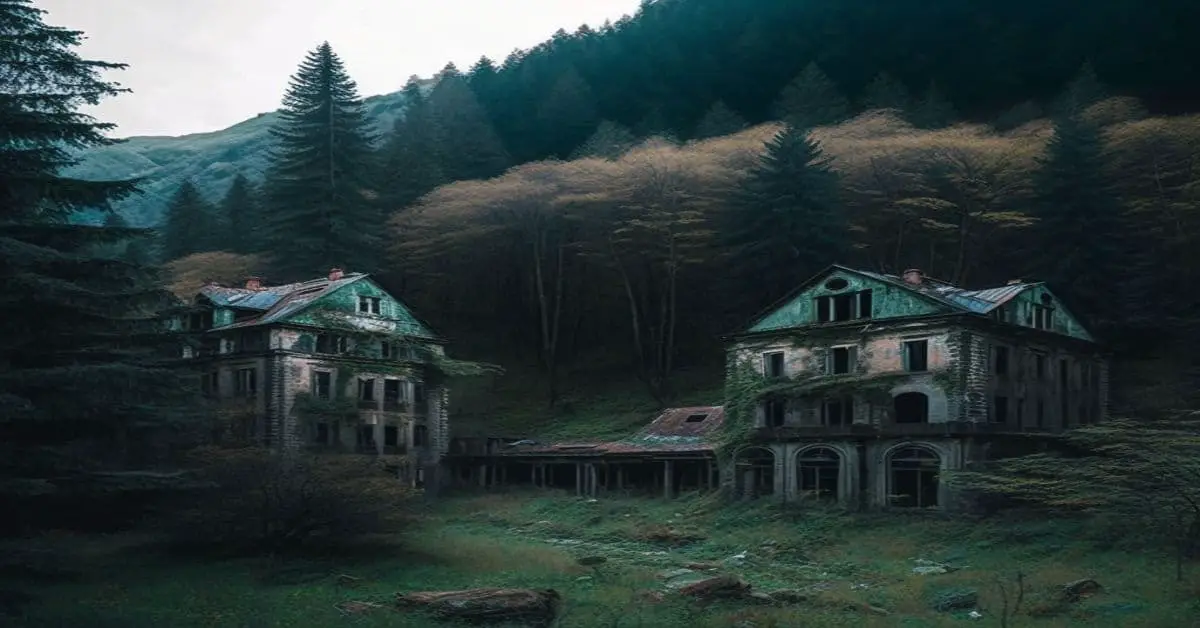The town of Termo, nestled in the Modoc Plateau of California, has become a mere shadow of its former self. Once a bustling hub for the Nevada-California-Oregon Railroad (N-C-O), today it is nothing more than a ghost town, with only a handful of abandoned railroad buildings and an occupied home.
Yet, despite its small size, Termo played a significant role in the history of the N-C-O Railroad, which operated between Susanville and Madeline in the early 1900s. The rich railroad heritage of Termo is now lost, buried under layers of time and neglect, leaving behind only remnants of a bygone era.
This article delves into the fascinating railroad history of Termo, California, and the legacy it has left behind. From the location and naming of the town to the construction of the railroad and the friction it caused, we will examine the rise and fall of this once-thriving community.
Through a detailed analysis of the current status and remains of Termo, we aim to provide an objective account of the ghost town’s past, shedding light on a forgotten chapter of California’s history.
Key Takeaways
- Termo was once a bustling hub for the Nevada-California-Oregon Railroad (N-C-O).
- The town played a significant role in the history of the N-C-O Railroad, which operated between Susanville and Madeline in the early 1900s.
- The $50,000 folly, a warehouse built for the town, reflects the challenges that arise during the construction of infrastructure projects.
- The remaining railroad facilities offer a glimpse into the historical significance of this once-thriving town and rail transportation’s role in shaping the region.
Location and Naming
Termo, a ghost town in the Modoc Plateau region of California, was named after a site selected by the Nevada-California-Oregon Railroad (N-C-O). The railroad construction crews built a large freight house measuring 178′ x 48′ and other buildings for workers. The town was established in 1900 after the N-C-O Railroad line between Susanville and Termo was established.
Despite being a small town, there was friction within the railroad over the site choice. The warehouse built for the town was known as the $50,000 folly, which highlights the costly mistake made by the railroad company. However, the facilities built by the railroad are the only remains of Termo, including outbuildings and cottages for railroad workers.
Today, only an occupied home and railroad oil and water tanks mark the spot of Termo, a testament to its forgotten history.
Railroad Construction and Friction
During the construction of the Nevada-California-Oregon Railroad, there was discord over the selected site, resulting in the infamous $50,000 folly.
The railroad construction crews built a large freight house and other buildings for workers, but there was friction within the railroad over the site choice.
Despite the disagreement, the N-C-O Railroad line between Susanville and Termo was established in 1900. However, Termo lost its title as the northern railhead of the N-C-O in 1901 when the line was pushed an additional 14 miles north to Madeline.
The construction of the N-C-O Railroad was a significant turning point in the region’s history.
The railroad facilities were the only remains of Termo, including outbuildings and cottages for railroad workers.
The $50,000 folly reflects the challenges that arise during the construction of such infrastructure projects, especially in remote areas.
Despite the friction, the N-C-O Railroad played a crucial role in transporting goods and people in the region, connecting Termo to other towns and cities in California.
Current Status and Remains
Today, the only remnants of the former settlement in the Modoc Plateau country of California are limited to residential property and storage tanks for oil and water belonging to the railroad. Despite the town’s former railroad history and significance, no visible buildings or structures are left standing in Termo.
However, the remaining railroad facilities, including outbuildings and cottages for railroad workers, offer a glimpse into the historical significance of this once-thriving town. Exploring Termo’s current remains can provide insight into the importance of rail transportation in the early 1900s.
The large freight house built by the railroad construction crews and the outbuildings and cottages serves as a testament to the town’s past. While the town may have faded into obscurity, these remaining structures offer a glimpse into the history of Termo and the role of rail transportation in shaping the region.
Frequently Asked Questions
What was the population of Termo, California, at its peak?
Termo’s population peak is unknown due to a lack of detailed demographic analysis. However, economic development and infrastructure impact were significant factors in the town’s brief existence as a railroad hub in the early 1900s.
Was there any significant event or natural disaster that contributed to the decline of Termo?
No significant event or natural disaster contributed to the decline of Termo. It was primarily due to the relocation of the N-C-O Railroad line to Madeline, causing decreased economic activity and employment opportunities. The impact on residents was significant, as many had to leave the town to seek work elsewhere.
What was the economic significance of Termo during its time as a functioning town?
Termo played a significant role in the transportation industry as the northern railhead of the N-C-O Railroad in the early 1900s. Its large freight house and other facilities supported local businesses, making it an economic hub in the Modoc Plateau region.
Are there any plans to renovate or preserve the remaining railroad facilities in Termo?
Preservation efforts for the remaining railroad facilities in Termo are currently unknown. However, due to its historical significance as a former northern railhead of the N-C-O Railroad, efforts to preserve and commemorate its railroad history may be considered in the future.
What other ghost towns are located in the Modoc Plateau region of California?
Several abandoned settlements in the Modoc Plateau region of California, including Cedarville, Fort Bidwell, and Eagleville. Historical preservation efforts have been made to document and conserve these ghost towns’ remaining structures and artifacts.


